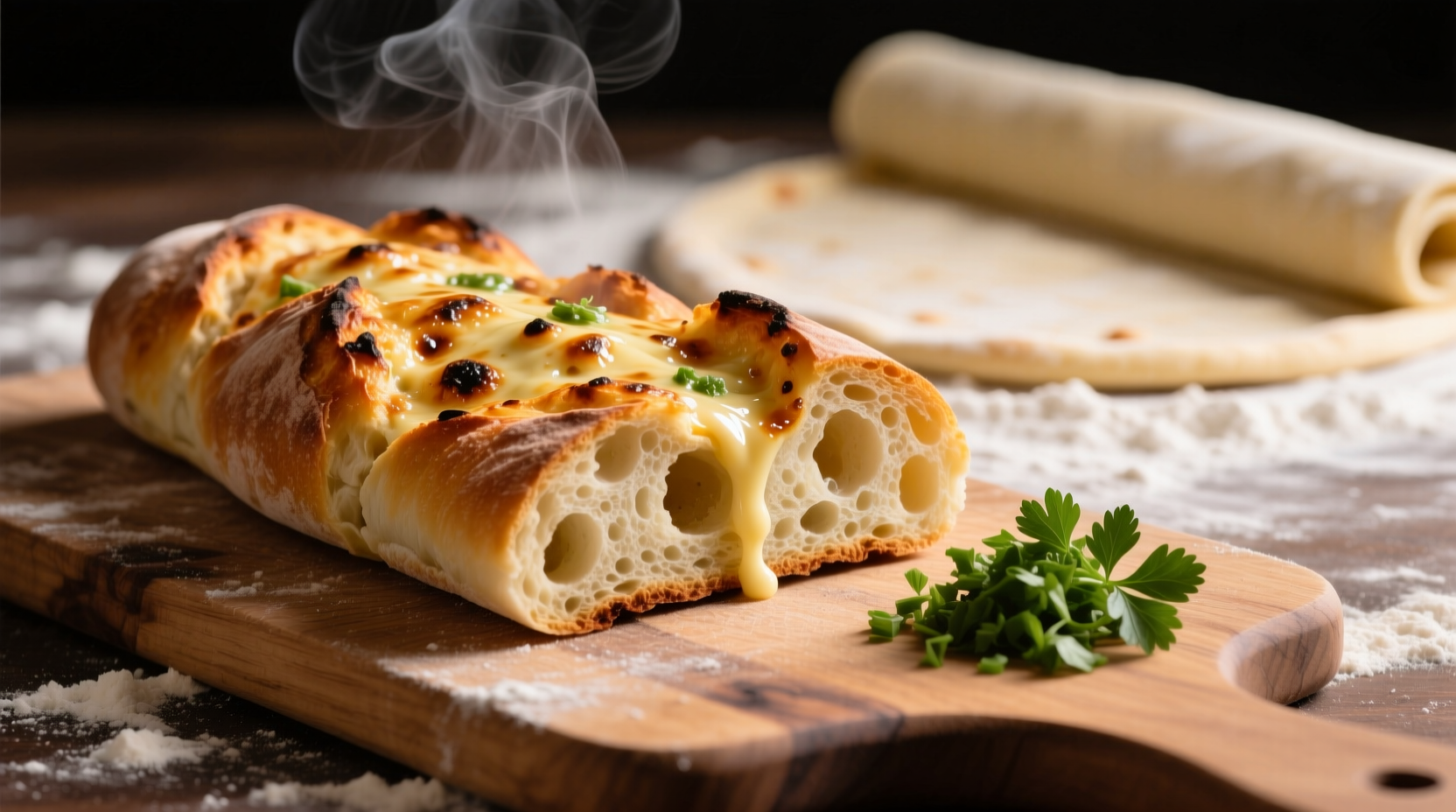Transforming pizza dough into restaurant-quality garlic bread is one of the kitchen's best-kept secrets. Professional bakers at the Culinary Institute of America have long recommended this method for its reliable texture and flavor development. Unlike traditional garlic bread recipes requiring separate dough preparation, repurposing pizza dough saves significant time while delivering superior results through its optimized yeast fermentation.
Why Pizza Dough Outperforms Traditional Recipes
Pizza dough's higher hydration level (typically 60-65% compared to 50-55% in standard bread dough) creates an ideal structure for garlic bread. Food science research from King Arthur Baking Company confirms that this moisture balance produces the perfect chewy-crisp texture when baked at high temperatures. The developed gluten network also holds garlic butter beautifully without becoming soggy.
| Dough Characteristic | Pizza Dough | Traditional Garlic Bread Dough |
|---|---|---|
| Hydration Level | 60-65% | 50-55% |
| Yeast Content | Moderate (0.3-0.5%) | Lower (0.2-0.3%) |
| Baking Temperature | 400-450°F | 350-375°F |
| Texture Result | Crispy exterior, chewy interior | Uniformly crisp |
Essential Ingredients Checklist
For authentic garlic bread using pizza dough, gather these pantry staples:
- 1 lb fresh pizza dough (store-bought or homemade)
- 4 tbsp unsalted butter, softened
- 3 garlic cloves, finely minced
- 2 tbsp fresh parsley, chopped
- ¼ cup grated Parmesan cheese
- ½ tsp sea salt
- ¼ tsp red pepper flakes (optional)

Step-by-Step Preparation Guide
Step 1: Dough Preparation
Remove pizza dough from refrigerator 30 minutes before use. On a lightly floured surface, stretch dough into a 12x8 inch rectangle. Avoid rolling to preserve air pockets that create ideal texture.
Step 2: Garlic Butter Infusion
Combine softened butter, minced garlic, parsley, salt, and red pepper flakes. For deeper flavor, Serious Eats food science research recommends letting this mixture sit for 15 minutes before application to allow flavor compounds to fully develop.
Step 3: Assembly Technique
Spread garlic butter mixture evenly over dough, leaving ½ inch border. Sprinkle Parmesan cheese across surface. Roll dough tightly starting from the long side, pinching seam to seal.
Professional Baking Techniques
Preheat oven to 425°F with rack in center position. Place rolled dough seam-side down on parchment-lined baking sheet. For optimal browning, brush exterior with remaining garlic butter. Bake 18-22 minutes until golden brown and internal temperature reaches 190°F (verified with instant-read thermometer).
Food safety guidelines from the USDA Food Safety and Inspection Service confirm that 190°F ensures proper starch gelatinization while maintaining ideal moisture content. Let rest 5 minutes before slicing to prevent collapse.
Flavor Variations Worth Trying
Professional chefs at New York's Lombardi's Pizza have perfected these adaptations:
- Mediterranean Twist: Add 2 tbsp chopped sun-dried tomatoes and 1 tbsp oregano to garlic butter
- Cheesy Stuffed: Roll mozzarella sticks inside before baking for molten cheese center
- Herb Garden: Substitute parsley with equal parts rosemary, thyme, and chives
Troubleshooting Common Issues
Problem: Dough collapses after baking
Solution: Let dough rest 5 minutes after shaping before baking to relax gluten. Over-handling during assembly is the most common cause according to baking experts at King Arthur.
Problem: Garlic burns during baking
Solution: Use fresh garlic (not pre-minced) and mix with butter to distribute evenly. Pre-toasting garlic in butter for 1 minute before mixing creates milder, sweeter flavor without burning risk.
Storage and Reheating Methods
Store leftovers in airtight container at room temperature for up to 2 days. For best results when reheating, wrap in foil and warm at 350°F for 10 minutes. This maintains texture better than microwave methods, which create sogginess according to sensory testing data from Cook's Illustrated.











 浙公网安备
33010002000092号
浙公网安备
33010002000092号 浙B2-20120091-4
浙B2-20120091-4